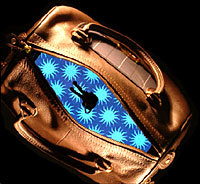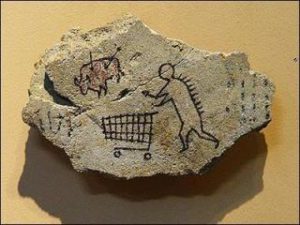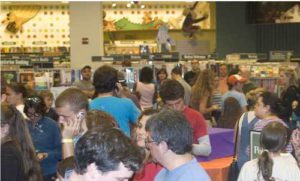Recently, I’ve noticed classical performers who are trying to encourage the audience to applaud whenever they feel like it, between movements, at the end, maybe even during the piece. I understand that motivation – they fear that classical music is viewed as stuffy, dull, overly rigid. They want to encourage more audience participation. They envy the visceral enthusiasm of their rock-star cousins and the vocal enthusiasm of their sports-fan distant relatives.
I’ll admit, the idea of the balcony at the concert hall doing the wave between the 2nd and 3rd movements has a certain appeal. And it would be a thrill to look out past the footlights to see someone in the third row with half their face painted as the black and white of piano keys. But actually applauding or cheering during the piece? As an audience member, I don’t want to miss any of the music; and, when performing, I certainly don’t want to be distracted, however well intentioned or positive it may be.
If you encourage that kind of positive involvement, I think you have to be prepared for the negative as well: boos, hisses, cries of “More pedal !!” or “the next time you look at the score you might want to use your glasses”, etc. seem just as likely to me as the good stuff. Be careful what you wish for; you might get more audience participation than you counted on.
No, I think the real source of stuffy concerts is stuffy programs, i.e. bad music selection or a very un-balanced program, or selections that are so routine that the artists could have phoned-in their performance. It’s a real challenge when the program is very uniform (a performance of the complete Well-Tempered Clavier comes to mind) to keep the music vital and fresh. On the other hand, as an audience member, you should know what to expect going to such a concert.
I have been to concerts where the audience responded after each and every difficult, virtuosic bit (the audience was influenced, I think, by knowing that rather than cancel the concert, the performer went ahead with a 103 temperature). It tended to become a bit circus-like: and now, lightning-fast octaves with triple-somersault.
And the other problem we classical performers have is finding the right level of emotion and self-expression, too much seems like over-acting and detracts from the music, not enough seems dry, dull and impersonal. We tend to emphasize the music and de-emphasize our involvement in making that music happen. So just why did I come to see you perform and not that other guy?
I don’t find classical audiences reticent to express what they are feeling, whether laughter or euphoria. Usually the music is too familiar to surprise. When was the last time you heard a Beethoven Symphony that brought out some feature you didn’t realize was there? The audience may smile in Haydn symphonies, but if they don’t laugh, it’s because they’ve heard the joke before. Don’t get me wrong, there are some very pleasant emotions associated with being reminded of something we already knew, but the contour of those emotions is limited. I believe strong reactions based solely on “performance” without a “content” component are just harder to achieve.
My favorite performances went in the opposite direction. I’ve been very lucky in my life to have been to, not just one, but three different performances that were magical. They bubble up in my memory often. What do I mean by magical? The stars were properly aligned, the audience was in a perfect state of hopeful expectation, the performers were prepared, relaxed and at the top of their game, the music well chosen both for the venue and the performers, on stage the adrenaline was just right so that the artists gave the performance of their lives, and the chosen music had sufficient beauty and depth to benefit from that perfection.
When it was over, can you guess what happened? The audience forgot to clap. That’s right. There was a stunned silence, what seemed a timeless pause in which no one moved, no one dared to break the spell that had been cast over them. And then, slowly, almost reluctantly, as the audience gradually came to its senses and realized what they had just witnessed, the applause started, and that finally broke the spell for everyone and the audience erupted. That, to me, is the bar, the aiming point. That’s what music is about for me: to be so moved that you forget to applaud.
 Yet another reason to be careful what you eat…
Yet another reason to be careful what you eat… Well, it finally happened. Just like the invention of calculus, there are times when circumstances are just right to lead to important breakthroughs in science, frequently by more than one person at the same time. This time: the handbag.
Well, it finally happened. Just like the invention of calculus, there are times when circumstances are just right to lead to important breakthroughs in science, frequently by more than one person at the same time. This time: the handbag.
 My nephew and some of his friends ran a lemonade stand this weekend. All the proceeds went to help the victims of Hurricane Katrina.
My nephew and some of his friends ran a lemonade stand this weekend. All the proceeds went to help the victims of Hurricane Katrina.



 I always suspected robots could make tremendous improvements in the quality of our lives. I’m not sure what the Mickey ears are all about though…
I always suspected robots could make tremendous improvements in the quality of our lives. I’m not sure what the Mickey ears are all about though…